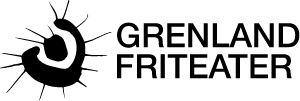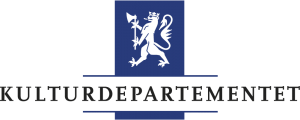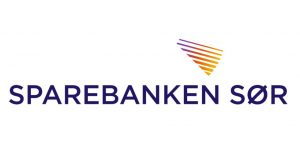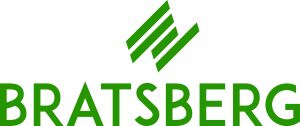Sweet Pain

My body is aching. My thighs hurt, my ribcage is tender. I am in bed and I should sleep. As I count the hours of which I do not have enough, I ponder: “Why do I train?” After a day of work, more
Why do I let the participants walk home with sore, than often, ache is my
aching and even bruised bodies? Why do I spend most of companion. It really doesn’t
the time in the workshop on “that which comes before”? hurt that much: it tells me how
(That which comes before performing, before creating a new alive I am. There is also a
production, before personal material). How can we prepare? sweetness in it. The pain is not
Arbeidskurve (work curve) is what we call our daily work a pain; it is an ache. I look
practice at Grenland Friteater. It consists of a series of phys- forward to getting rid of it, but
ical exercises used as a means to develop skills of preci sion, when the ache is with me I also
direction, alertness, change, alternation and presence; it enjoy it, because it is a
passes from so-called cold, technical exercises on to devel- reminder of the work I have
oping a warmer and more personal work – your own mate- done.
rial. It is important to give the precision and discipline of the training to the more personal material.
In the arbeidskurve the physical exercises give way to more personal material; encounters with other actors gra dually take place and develop, resulting in what we call a meeting. One meeting develops into more meetings, building in length and intricacy, and these meetings even- tually become scenes.
The actors’ material is the pool from which the director makes her selection, by observing and pointing out material and scores. The director in this way gives much of the material back to the actors, who will continue to work by recreating, not copying, but re-shaping. The continual creative dialogue grows out of the actor’s work and the director’s response. The intri- cate nature of this pattern depends on the strength and base of the ensemble and on the continuity of the work. It takes time.
When trying to build a more precise language around the work, we have found musical terminology and practice helpful; for example the structure of jazz with its improvi- sations and variations on a theme where the melody is
relatively fixed, but the interpretation and realisation of that melody changes from day to day.
WHY DO I TRAIN? I think of the training, the beginning of the arbeidskurve, as home, and of the final stages of the arbeidskurve as away. There is secu rity in the starting point: I know my exer cises, I am able to take precise and decided steps, I build stamina, and slowly rid myself of what is stale, of laziness, resistance, preconceptions, I empty my head from shop ping lists, children’s needs, the phone calls I did not make and the messages I did not give. I try to become absorbed by the demands of the exercises and I start to act by myself. It is autonomous work: the body takes over, the intelligence is in the body. I might surprise myself.
Home is a place where one cannot stay forever. It is a safety net. I must leave home. Knowing I have a home, I can venture.
At a certain stage of the arbeidskurve there is an important opportunity to return home, if not all the way into the house, at least to the threshold. The departure might have been premature and one can make a detour back into training to check what one knows in order to reenter the more labora tory based work on personal performance material. I run with the known into the unknown.
I train because I need to, especially now that I am getting older. I don’t have to train. Athletes are not better artists, excel lence in acrobatics is no guarantee of anything else other than excellence in acro batics. At times I hate training. I want to hide in the corner with coffee and ciga rettes. I do not want to be touched, watched, observed. I want to hide myself. I do not want my shoulder to touch the floor, my feet to leap in the air, my knees to bend. I do not want to move.
THe PleAsuRe Of PAIN
For a long time I stopped using this way of working because it became necessary to work directly on the performance material; always to be prepared and ready; not to rely on the training and the slow building as necessary preparation.
Working a lot as a director has left me with a big head and a frail body. I do not mean the body as muscles, sinew and bone, but the intelligent, responding, smart, communicative body the possible me.
To train is to start. The first step is important and should lead somewhere. Training is a place for analysis of what is to come. Training conquers hesitation and fear: hesitation before a high somersault, fear of a fellow actor’s weight when he jumps into your arms. This is a victory in itself but it has greater implications later on, when going on stage alone or when starting a long mono logue.
For many people training feels like an obstacle. They tell me they cannot possibly do the exercises, because they do not have the right bodies. I ask them to transform the exercises and to concentrate on their own way of doing them. I ask them to make up their own exercises. In narcissistic, anorexic times like ours, I emphasise the right and need for us to be the shapes we are.
As a director I need to work with diffe rences, juxtapositions and surprise. As an actor I do not need to see copies and mirror images of myself when meeting others. I am looking for a development of autonomy and integrity from those I work with.
Training is a confrontation with oneself and with one’s own ability. At times the training is amusing, at times boring, but certainly challenging. I also allow myself to make choices with regards to my own training, this is a privilege of getting older. One of my interests now is to try different types of training with the earlier mentioned rules in mind. How do I play badminton with a partner observing the general rules of the game, as well as developing it into some thing more valuable? How I can be conscious of where I am in the room, changing from being close to the net to further back, giving slow hits and hard smashes, trying to imagine that we are playing badminton without the rackets, the ball and the net and still keeping a focused eye on the partner as if she was actually serving.
You can give yourself new tasks all the time: after the change which occurs in the movements when you have started sweating and your motor system is engaged, you can change from playing aggressively to smartly trying to trick the other, from winning to losing.
My body is starting to give feedback on the treatment it received during the caring and not caring days. The challenge of change and adaptation arrives; in having to transform there is an invention. I find my body wiser. I am proud that as a result it is patient enough to do Tai Chi, not deman ding the speed and thrust of Kung Fu. I can now work more internally, with stillness.
My body is aching. Why do I train? Why do I work with theatre? Why do I so often ask why? Why do I often think I am tired? Tired of doing workshops, for example? I call these morning thoughts. After a day of work, more than often, ache is my companion. It really doesn’t hurt that much: it tells me how alive I am. There is also a sweetness in it. The pain is not a pain; it is an ache. I look forward to getting rid of it, but when the ache is with me I also enjoy it, because it is a reminder of the work I have done.
When the essence of the training is stronger than my will not to do it, I can train alone and the sensation of the work slowly takes over; I can do Tai Chi and Kung Fu without inspiration, without others, without light, without a work space. The point is that no matter if I am half asleep when I start, it prepares me for what is to come. I no longer call this training, but preparation.
There is another paradox, when I know well how to master a Kung Fu sequence, it masters and shows me. It is strange that one can learn so many things by giving in.
My body aches when I train. My body aches when I am not training. That is age and a consequence of all I have done and have not done. The body has a voice which is muted by daily life. The voice of the body is sometimes easier to hear during silence.
I do not know if there is an order, or if we have to make it, that is if there is a god or we have to invent one. Whether it exists outside of me or is being instinctively created by me, is not important.
Some time ago a colleague of mine asked me: “When you take off on stage, do you know what you are doing?” I was vague and could not formulate my answer. Now I think that to take off is to enter another me. Training as experience, security and knowl edge makes it possible to take off. It is a demand from the person inside me who is only one step ahead.
At times I am criticised because I change the score during performances. It is difficult to know how to respond to this criticism. On one hand I agree, but I do not change for the sake of changing, rather the change comes to me. It is an organic change that logically follows that which came before.
When we started to work on the poems of Georg Johannesen, creating the perfor mances Good Times, for the Evil Ones and later on Blue is the Smoke of War, one of my tasks was to sink my voice one octave, and still find power and strength. I used this voice especially for the poems of Tu Fu, that Johannesen had recreated in transla tion. To be able to sink down in register and stay there, I had to invent some new exercises in the training. First I found out that the Tai Chi and Kung Fu sessions put me in a good condition for vocal work, since the breathing and low base of the work opened up the pelvis. I then started to do variations of the Tai Chi series, whilst at the same time keeping the same flow in the voice as in the movement. As I did not want to use the words from the text, but still needed more than sound alone, I sang a song from The Crash Test Dummies called Mmm, where the singer sustains what was for me a very low voice. Gradually I lifted my body upwards to a more normal walking poise, trying not to lose the low pitch. I found that I had to use a lot of strength to keep the lower regions open, quite contrary to earlier expectations or experience. To check and to keep myself from going higher up in the register I let my body fall down to a low knee bend every now and then.
My director, Tor Arne Ursin, and I have for several years talked and argued about whether the voice naturally follows the movement of the body, for example if you stand on your toes your voice automati cally goes into the high register and vice versa. I argued that this was not necessarily the case and had tried in my training to sing soprano whilst bending down or curling up. In this training I also wanted to find out how far I could move my body without losing what I now called my Chinese voice, a masculine voice. I wanted to be able to tip toe if neces sary, and keep it. This is an ongoing quest, dependent on how controlled and concen trated the work is. It is possible to sustain an even voice no matter what the physical demands of the work.
Whilst working on this I remembered a workshop we did many years ago with Jolanda Rodio. There, in addition to learning about our voice and how to control it, we were practising keeping a steady note at the same time as we were leap frogging. It was extremely difficult and none of us could do as Jolanda wanted, but we improved as we tried.
Now, after doing the training combining Tai Chi with vocal work, I can reach this quality of voice much more easily. I have invented a technique.
Why do I train? Because it is my work; it is what brings meaning beyond itself, as I give meaning to it.







